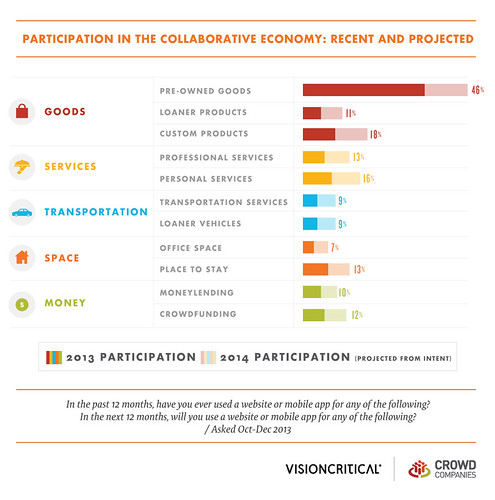Startup Schools: America's Most Entrepreneurial Universities
For the second time, Stanford University out-muscled its East Coast rivals to top the FORBES 2014 most entrepreneurial universities list. Silicon Valley’s reach has extended across California, as the state’s schools took over half of this year’s top ten spots.
FORBES ranked the nation’s most entrepreneurial research universities based on their entrepreneurial ratios – the number of alumni and students who have identified themselves as founders and business owners on LinkedInagainst the school’s total student body (undergraduate and graduate combined).
Here are the highlights of the top 20 start-up schools on our list:
1 Stanford University
Its entrepreneurs don’t always wait for degrees. Among its famous dropouts:Google's Larry Page and Sergey Brin; Yahoo’s Jerry Yang and David Filo; and Snapchat’s Evan Spiegel.
2 Massachusetts Institute of Technology
Its student-run $100K Entrepreneurship Competition has led to the creation of more than 130 companies and 2,500 jobs.
3 University of California, Berkeley
Berkeley has three startup incubators on campus, including SkyDeck, a joint effort of the university’s research office and its business and engineering schools.
4 Cornell University
Founded in 2001, the Cornell Entrepreneur Network has organized hundreds of events for about 20,000 alumni, students, staff, parents and friends (read my colleague Natalie Robehmed’s profile on Cornell).
5 University of California, Los Angeles
State school UCLA hosted 4,000 developers
in April for the second annual LA Hacks hackathon.
in April for the second annual LA Hacks hackathon.
6 California Institute of Technology
Caltech boasts 32 alumni and faculty Nobel laureates despite a total student body of fewer than 2,300 in Pasadena.
7 Brown University
Popular professor Barrett Hazeltine has been teaching entrepreneurship and engineering for about half a century. Former students include the founders of Nantucket Nectars.
8 Princeton University
Summa cum laude grad Jeff Bezos was president of its Students for the Exploration & Development of Space. He donated $15 million to build its neuroscience research center.
9 Pepperdine University
Associated with the Churches of Christ, this private school in California counts among its alums eHarmony founder Neil Clark Warren.
10 Dartmouth College
Dartmouth’s Entrepreneurial Network (DEN) has provided support for over 500 projects and companies since 2001.
11 Rensselaer Polytechnic Institute
RPI, established in Troy, N.Y. in 1824, claims to be the oldest science and technology school in the English-speaking world.
12 Yale University
Telecom mogul John Malone got his start as an electrical engineering student at Yale; he has since donated $74 million to the engineering school.
13 Clark University
Matthew Goldman turned his economic lessons at Clark into Blue Man Group, now a multimillion-dollar show across the country that he cofounded.
14 Syracuse University
Private equity titan Daniel D’Aniello, a magna cum laude graduate, funds an internship program that gives 20 students hands-on entrepreneurial experience each year.
15 Southern Methodist University
Selected students at SMU’s business school gain firsthand venture capital experience by running the Cox MBA Venture Fund.
16 New York University
NYU will open a 5,900-square-foot Entrepreneurs Lab in the heart of Greenwich Village this fall for students to exchange ideas.
17 Howard University
Sean “Diddy” Combs got his honorary doctorate degree earlier this year almost 25 years after dropping out of the school to build his music empire.
18 San Diego State University
Rubio’s Grill cofounder Ralph Rubio enjoyed his first fish taco while on spring break from SDSU; the company now has more than 190 restaurants nationwide.
19 University of Colorado, Boulder
The university got a $4 million grant from Blackstone Group to build an entrepreneurs network for the state.
20 University of California, Santa Barbara
In July UCSB and the nearby city of Goleta opened a 4,500-square-foot incubator in Oldtown Goleta.
The rest of the top 50 universities are:
21 University of San Francisco
22 University of Southern California
23 The University of Texas at Austin
24 Carnegie Mellon University
25 University of Miami
26 Northwestern University
27 University of Denver
28 Boston University
29 American University
30 Brigham Young University
31 Miami University-Oxford
32 Brandeis University
33 Florida Institute of Technology
34 Harvard University
35 University of Maryland-College Park
36 Hofstra University
37 Southern Illinois University Carbondale
38 University of Tulsa
39 Tufts University
40 University of Michigan-Ann Arbor
41 University of Notre Dame
42 University of Pennsylvania
43 University of Washington-Seattle
44 Clarkson University
45 Lehigh University
46 Pennsylvania State University
47 University of San Diego
48 Boston College
49 Colorado State University
50 Rice University



